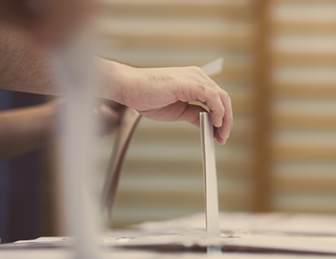The clue is in the name: “opinion polls”. Surveys for the media – the kind that attract the most attention – tend to be about our opinions: on the political parties, on taxes, crime, immigration, public services and so on. Sometimes they veer towards sport or celebrities; but, with rare exceptions, they still measure our views.
Yet surveys can also measure other things: what we do and how we feel, not just what we think. One of YouGov’s ambitions in its collaboration with Cambridge University is to provide a fuller, more rounded and more nuanced picture of British society than is possible with short news-agenda-driven polls for the media. Here is a glimpse at some of the findings from the major survey YouGov-Cambridge conducted earlier this year. This article is designed not to provide a definitive account, but to illustrate some aspects of Britain today: each deserves more detailed analysis that we hope to supply in years to come.
One basic question we asked was: “Overall, how satisfied are you with your life nowadays?”. We asked people to answer on a scale of 0, not at all satisfied, to 10, completely satisfied.
Overall, 30% are generally happy, giving an answer of 8-10. Around half, 48%, answered 5-7. The remaining 22% are broadly unhappy, giving an answer of 0-4. If we subtract the unhappy 22% from the happy 30%, we obtain an overall happiness index of plus 8. On its own, that tells us little. But when we compare the answers given by different groups, the results become more intriguing. As the first chart shows, six groups stand out as significantly happier than the average, while five have negative scores. If you are a well-to-do married, Conservative-voting woman living in a detached house and reading the Daily Telegraph, the chances are you are pretty pleased with life. But if you are in your forties, unskilled and single, separated or divorced, you may well be down in the dumps.
So far, so predictable; but some findings suggest the roots of happiness and unhappiness deserve further study. For example, why do married women (plus 23) tend to be happier than married men (plus 16)?
And what about the age pattern? One striking finding is that people aged 35-54 (minus 3) are less happy than either the under 35s (plus 8 or the over 55s (plus 21). Our second chart brings together other data that suggest a broader pattern, with people in this age group often finding that the pressures of work, family and finance take their toll. These people in their middle years are likeliest to feel unfit and overweight; to have to work through their meal breaks and socialise least with their friends; and – despite often enjoying their highest-earning years – to be short of money.
Much debate about public policy concentrates on the youngest adults (anti-social behaviour, tuition fees, unemployment, getting on the housing ladder) or the elderly (pensions, access to the NHS, social care, inheritance tax). Perhaps more attention needs to be paid to those in between: they may seem to be OK – they are mostly homeowners in work – but are often stressed out. Politically, it must be dangerous to ignore the warning signs from those of our fellow citizens who tend to pay the most taxes and benefit least from public spending – yet, financially, feel the most stretched.
Finally, the final three charts together examine who does what at home. They compare the assessments of husbands and wives. They broadly agree that washing, cooking and cleaning tend to be done by wives, while gardening and DIY tend to be done by husbands. So traditional gender roles are still alive.
But the detailed figures suggest some big differences in perception. Whereas 61% of wives say they mostly do the shopping for food and groceries, and just 7% say they leave it to their husbands – a 54-point gender gap – husbands put the gender gap at only 25 points, with just 37% saying their wives do the food and grocery shopping, while 12% claim to do so themselves. Only one in four wives say the task is shared equally, while one in two husbands reckon that equality has arrived.
In every case, wives think the gender gap is biggest in roles they have traditionally dominated, while men say it is biggest for their traditional roles. So women put the gender gap for cooking at 59 points, while men say it is just 27 points. On the other hand, men reckon the gender gap for DIY is a whopping 82 points, while women think it is only 47 points. (Only 12% of husbands say their wives do much DIY – but 37% of wives reckon they play at least an equal role.) It’s clear that one of the challenges is not merely to get right who does what at home, but to ensure that wives and husbands can avoid bickering over how much each does already. In the pursuit of equality, it would help if could agree where the starting line is.










